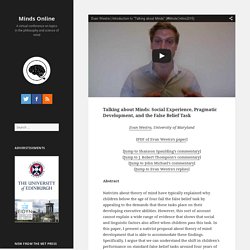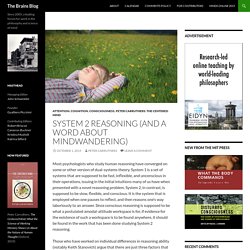

Quartz Obsession, December 17, 2018. Meet the People Who Live Outside of Time. Slowly sinking into submarine "watch time.

" (Photo: Pixabay) For four years, Maxime Theriault woke up, ate breakfast, and listened to the ocean sounds using SONAR, far beneath the sea. Every morning, he knew his day was going to take shape over 18 hours. The 24-hour day felt like a distant memory to him–something he and over a hundred crewmates left behind when they joined a submarine crew of the U.S. Navy, which until October 2015 used “watch time,” a special submarine schedule, which kept the crew on a surreal rotation: 18-hour days and six-hour nights. “Basically your day is broken into three chunks once we get underway,” says Theriault. This schedule kept the submarine in its own time zone, so to speak. “They would dim the lights a little when it was night time hours, but other than that, you wouldn’t know.” The Hopi reservation sits within the greater Navajo reservation, yet the two have different attitudes towards daylight savings. How the brain controls sleep: Brain structure generates pockets of sleep within the brain.
Sleep is usually considered an all-or-nothing state: The brain is either entirely awake or entirely asleep.

However, MIT neuroscientists have discovered a brain circuit that can trigger small regions of the brain to fall asleep or become less alert, while the rest of the brain remains awake. This circuit originates in a brain structure known as the thalamic reticular nucleus (TRN), which relays signals to the thalamus and then the brain's cortex, inducing pockets of the slow, oscillating brain waves characteristic of deep sleep.
Slow oscillations also occur during coma and general anesthesia, and are associated with decreased arousal. With enough TRN activity, these waves can take over the entire brain. The researchers believe the TRN may help the brain consolidate new memories by coordinating slow waves between different parts of the brain, allowing them to share information more easily. Local control Natural sleep and general anesthesia. How Your Brain Is Wired Reveals the Real You. The brain’s wiring patterns can shed light on a person’s positive and negative traits, researchers report in Nature Neuroscience.

The finding, published on September 28, is the first from the Human Connectome Project (HCP), an international effort to map active connections between neurons in different parts of the brain. The HCP, which launched in 2010 at a cost of US$40 million, seeks to scan the brain networks, or connectomes, of 1,200 adults. Among its goals is to chart the networks that are active when the brain is idle; these are thought to keep the different parts of the brain connected in case they need to perform a task. Talking about Minds: Social Experience, Pragmatic Development, and the False Belief Task. Evan Westra, University of Maryland [PDF of Evan Westra’s paper] [Jump to Shannon Spaulding’s commentary] [Jump to J.

Robert Thompson’s commentary] [Jump to John Michael’s commentary] [Jump to Evan Westra’s replies] Abstract Nativists about theory of mind have typically explained why children below the age of four fail the false belief task by appealing to the demands that these tasks place on their developing executive abilities. 1. Since it became a topic of empirical research, the study of children’s theory of mind – their understanding of the underlying psychological nature of behavior – has been dominated by the discovery that younger children systematically fail false belief tasks, and start to succeed sometime after their fourth birthdays (Wellman, Cross, & Watson, 2001; Wimmer & Perner, 1983). The pragmatic development account is not wholly new. 2. Exposure to language in general also has dramatic effects on when children are able to pass the FBT. 3. 3.1. 3.2. 3.3. 4. 5. 6.
Notes. System 2 reasoning (and a word about mindwandering) Most psychologists who study human reasoning have converged on some or other version of dual-systems theory.

System 1 is a set of systems that are supposed to be fast, inflexible, and unconscious in their operations, issuing in the initial intuitions many of us have when presented with a novel reasoning problem. System 2, in contrast, is supposed to be slow, flexible, and conscious. It is the system that is employed when one pauses to reflect, and then reasons one’s way laboriously to an answer.
Since conscious reasoning is supposed to be what a postulated amodal-attitude workspace is for, if evidence for the existence of such a workspace is to be found anywhere, it should be found in the work that has been done studying System 2 reasoning. Those who have worked on individual differences in reasoning ability (notably Keith Stanovich) argue that there are just three factors that explain such differences.
Related Working memory and fluid g.